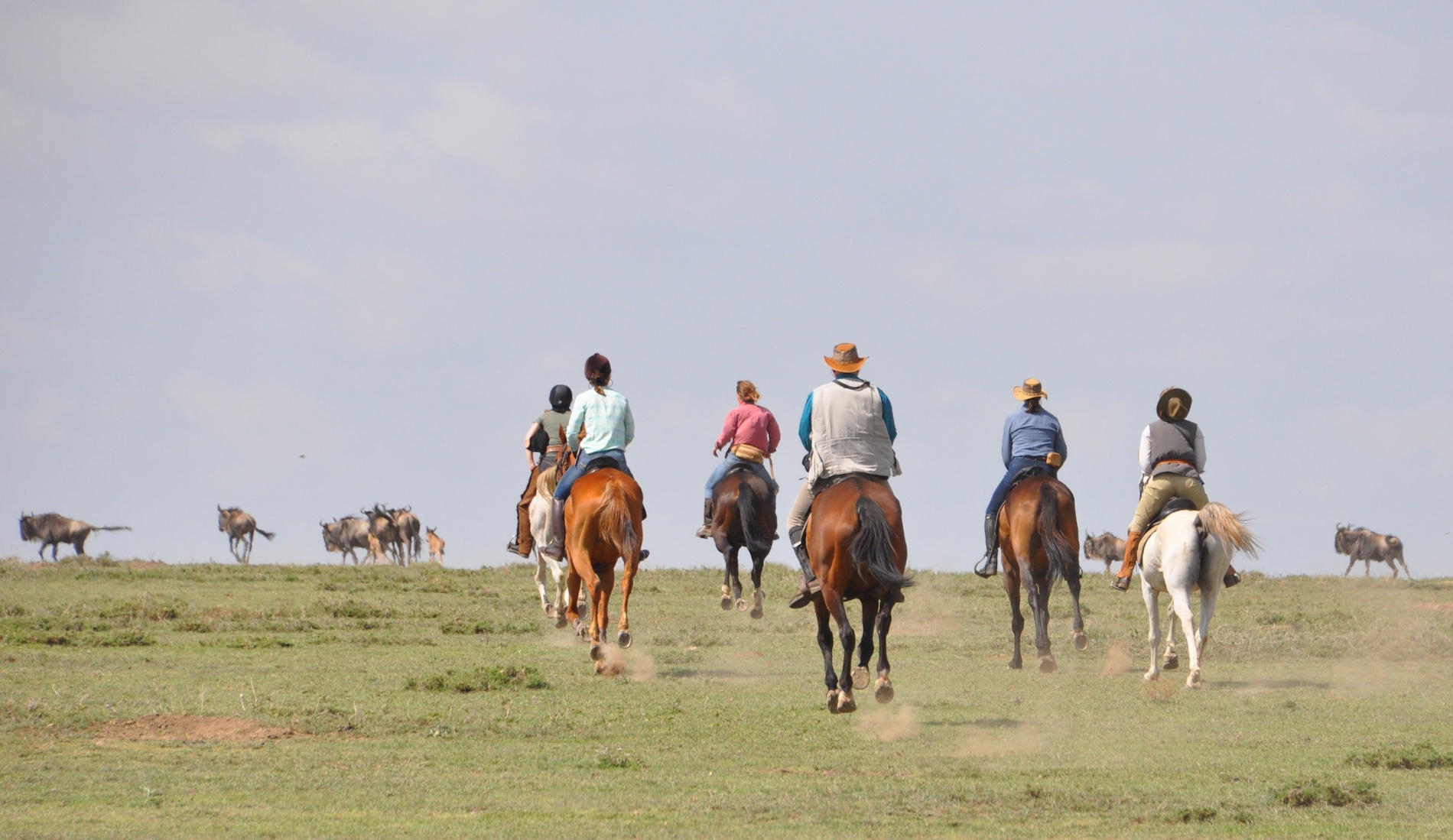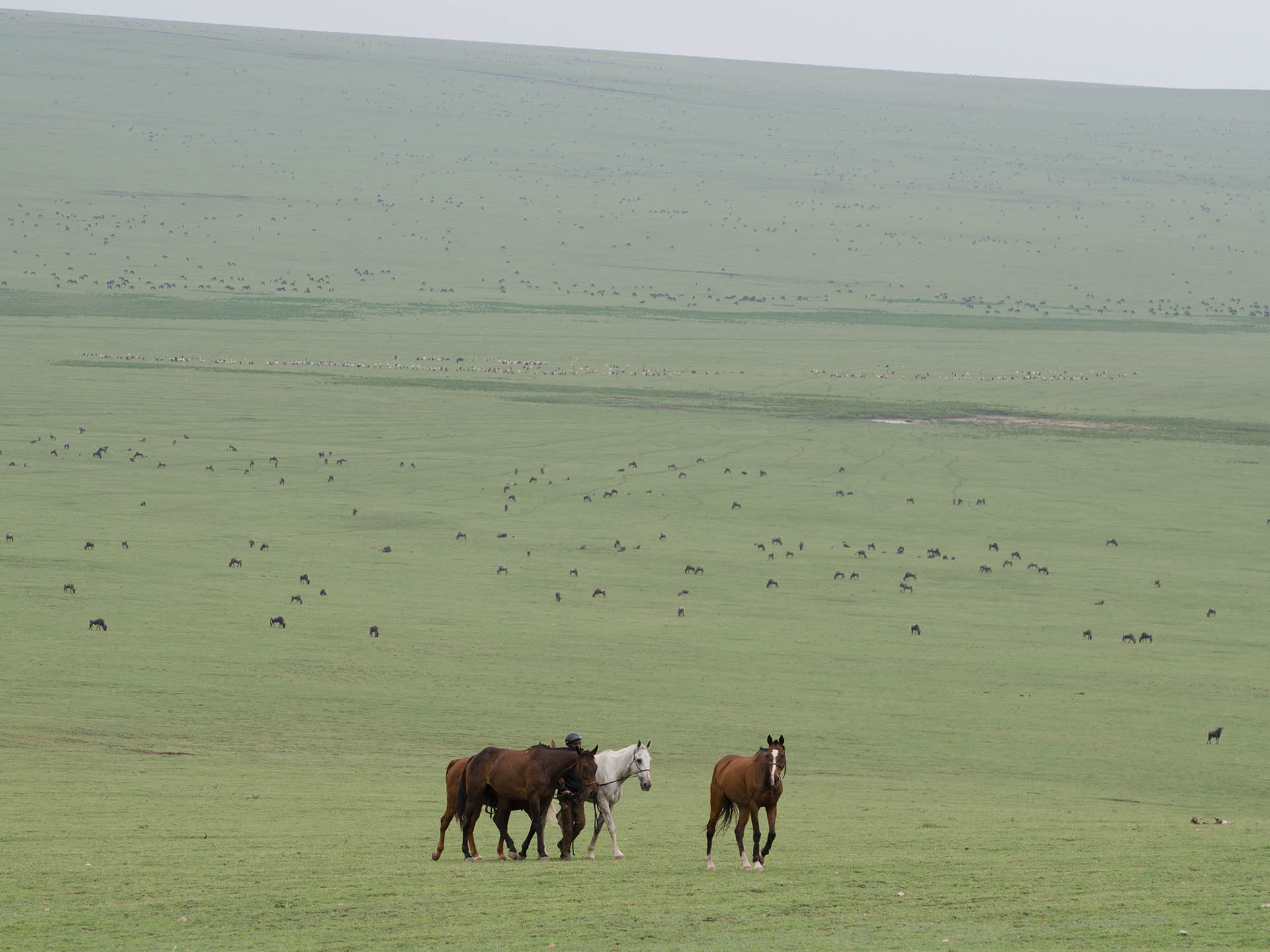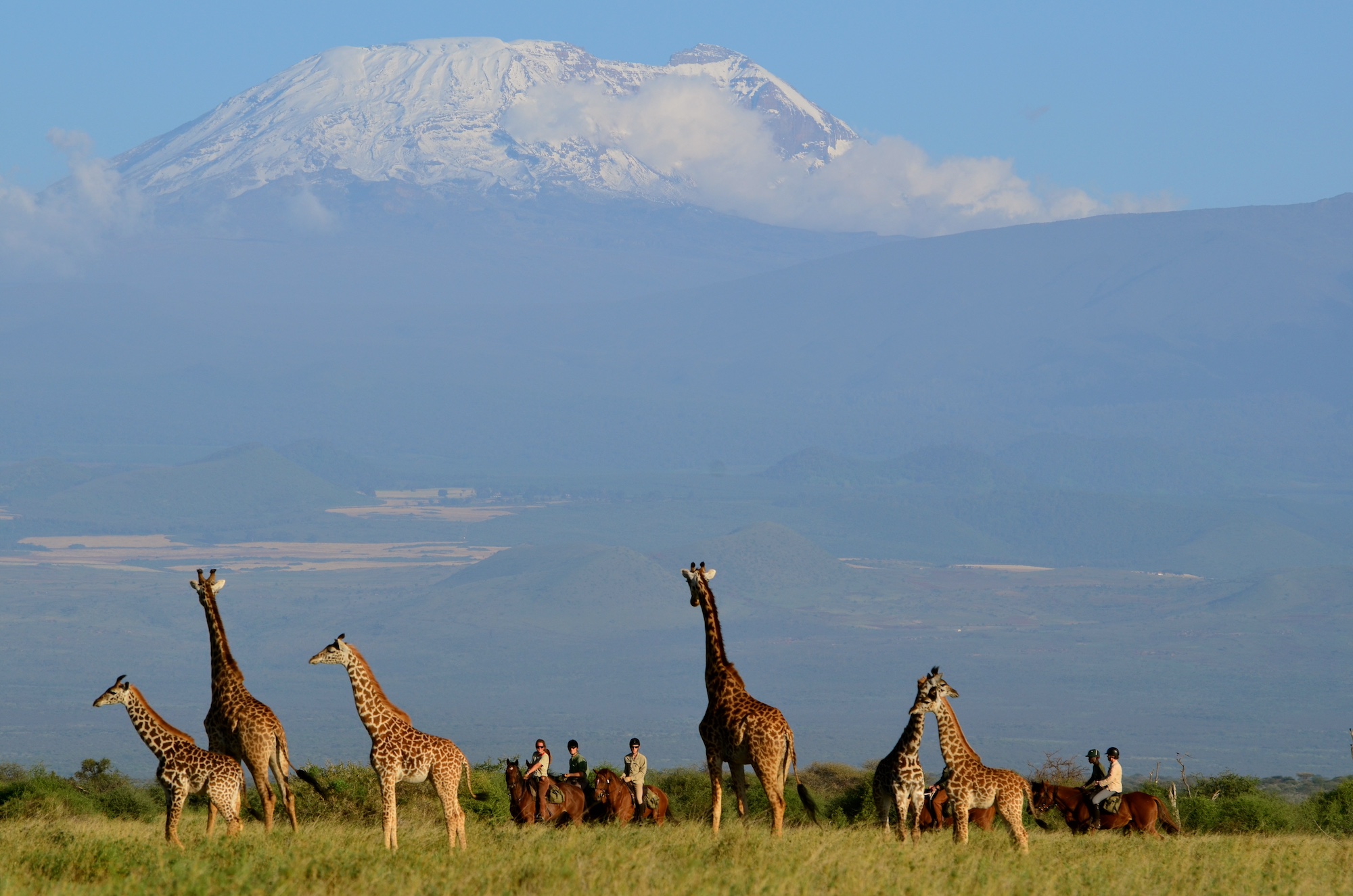Serengeti Reserve
Mythical African Mountain
Mythical African Mountain: Looking for the elephants under The Kilimanjaro
We will embark on the search for elephants along the savannah and forest in Tanzania, under the watch of the great and legendary Kilimanjaro. We look for areas of dense bushes and acacia forests. We want to see the elephants, maybe because we know that by watching this animal, to soak in their greatness with our sight, is an effective way to connect with Africa.
- Location
- Tanzania
- Duration
- 8 Days / 7 Nights
- Season
- June - January
- Horses
- Thoroughbred and Local Breeds
- The Riding
- 4 – 6 hours per day
Day by Day
Day 1. Getting in tune.
We land at the International Airport of Kilimanjaro. We pick you up from there and drive for about half an hour until we reach our refuge. The first step in all this journey is to get in tune. We get to know the surroundings, breathing the African air, meet the other participants, and, while having dinner, we obtain information necessary to let ourselves penetrate the savannah the next day.
Day 2. Looking challenge in the eye.
We get up to a coffee or tea and get ourselves ready to depart: the horses are waiting for us in the National Park of Arusha. We saddle them up, ride them, and look challenge in the eye. Once we go forward, we notice that vegetation changes drastically, from an open area to dense vegetation. We can see elephants, buffaloes, leopards, and exotic species. We can no longer see far; we just see what is close to us, the imminent. That’s the African spirit: a reality waiting for us, crouching. After lunch, we continue with our journey. We stop by the old house of Margarete Trappe, the Iron Lady of the First World War, who was fascinated by cavalcades along this land. We reach the camp, set at the foot of Mount Meru, upon sunset.
Day 3. Intense cavalcade.
If we are lucky, we will wake up with the nice Colobus monkeys. We have breakfast and ride our horses towards the setting where the Hatari movie starred by John Wayne was filmed. We then make our resistance endure to climb the Fig Tree Arc. We reach a tropical jungle, over a cascade, and have lunch next to the sounds of the jungle, the leaves, with the animals watching us from the shadows. We head back to the camp and have the choice to ride the pickups towards the Momella lakes to visit them. Maybe, if we are lucky enough and if we are stealthy, we will see hippopotamus and aquatic birds. The night is falling over the lake and we see the stars reflected over the water, we go back to the camp. We have a shower, dinner, and rest: tomorrow will be another day.
Day 4. Moving towards the Kilimanjaro, the Maasai culture, and an atavistic search.
At this point of the journey, we understand that sleep is not more than a parenthesis in our adventure, a pause to take in that we are in Africa, in the savannah that adjoins the jungle, and that, in the end, we are standing over the land where everything started. Maybe that’s why the connection with Africa has something to do with the atavistic, the ancestral. We get up, have breakfast, and continue the search, both internal and external. We leave the National Park of Arusha and head towards the Kilimanjaro. We take advantage of the morning freshness to go forward as far as we can, before the sun rays strike. We go through the cropping lands of Tanzania, the Maasai’s steppe. We come across local cultures. Before continuing with our journey and reaching the next camp at sunset, we have lunch and regain our energies.
Day 5. Take in all the greatness we can see.
Above all, our journey is movement. We get up, have breakfast, and commence the search for the greatest mammals in the world: the elephants. We look for them in dense bush areas, in acacia forests. We want to see elephants, maybe because we know that by watching this animal, to take in their greatness with our sight, is an effective way to feel that we are in Africa. In the end, we are in Africa to be taken over by sensations. In the afternoon, we ride our horses once again and return to the camp to enjoy this remote place, lost in the center of the world, in the outdoors, with nature sounds as background noise.
Day 6. Watch and be watched.
We get up early, have breakfast, ride our equine partners, and head towards the Seven Hills. Once we cross it, we go through the Sinya Village and stop to have lunch under the shade. The land varies: there are open spaces and wooded areas. We have good chances of seeing zebras, giraffes, and wildebeests, but above all: the shy antelope, the Gerenuk, which we watch as we go forward - although it would be more accurate to state that it is watching us. We spend the night in an amazing place, with an open sky, where we feel surrounded by Mount Meru, Namanga, Longido, and the legendary and great Kilimanjaro Mount.
Day 7. Following the steps of the elephants.
We get up and head towards the border with Kenya. We use this day to track the footprints of elephants, the biggest and one of the most mysterious animals in the African fauna. Why are we so attracted to them? What are we looking forward to discovering in their path, the lifting of their trunk, the way in which they relate to their peers? Impossible to know beforehand. Maybe this is the reason why we advance through the savannah during the whole day. We see the fauna on the plains, the animals interacting, moving, alert for the presence of any predators. We hope for the night to be crystal clear in order to see a blue sky apart from the mountains.
Day 8. Farewell.
Last day of safari. We say goodbye to our partners, the horses, who are as much of a protagonist as we have been in this journey. We have breakfast and head back to civilization, a safe area, a three-hour trip on the road before reaching the airport. For those who travel late, there is a waiting room in our refuge club.














